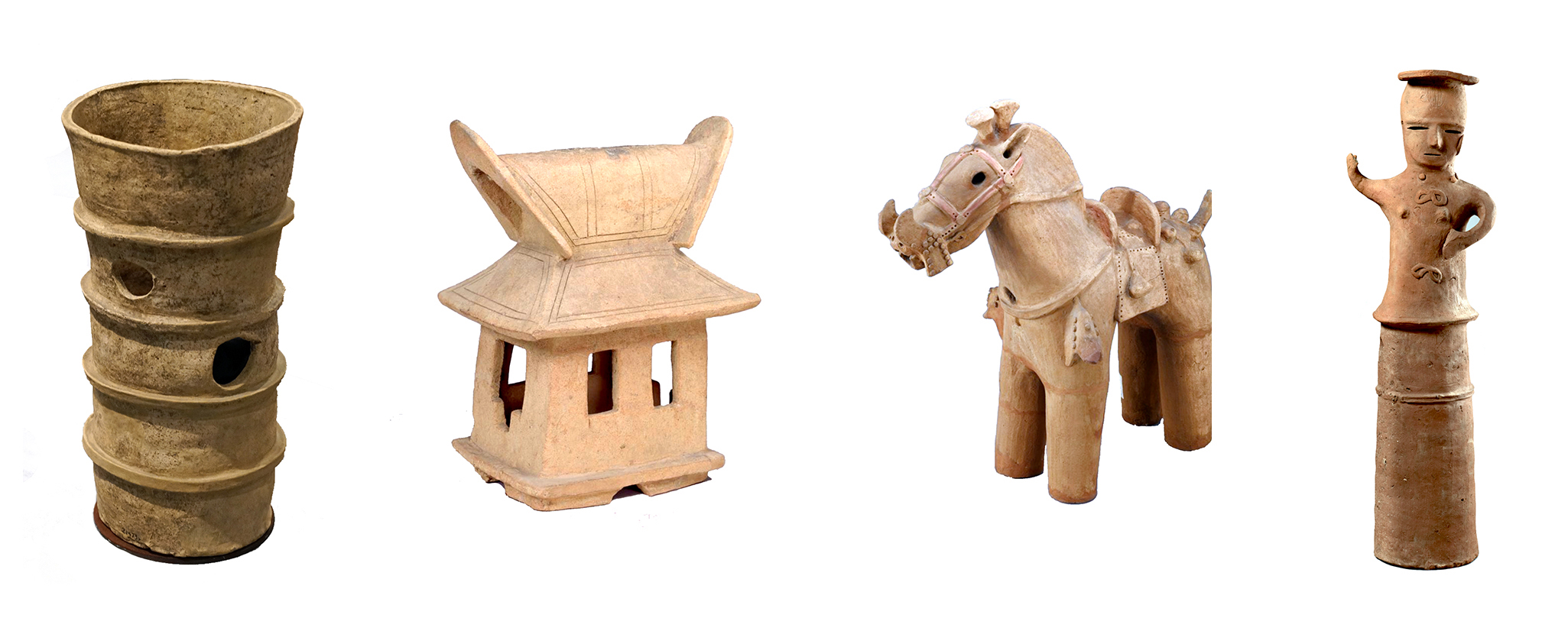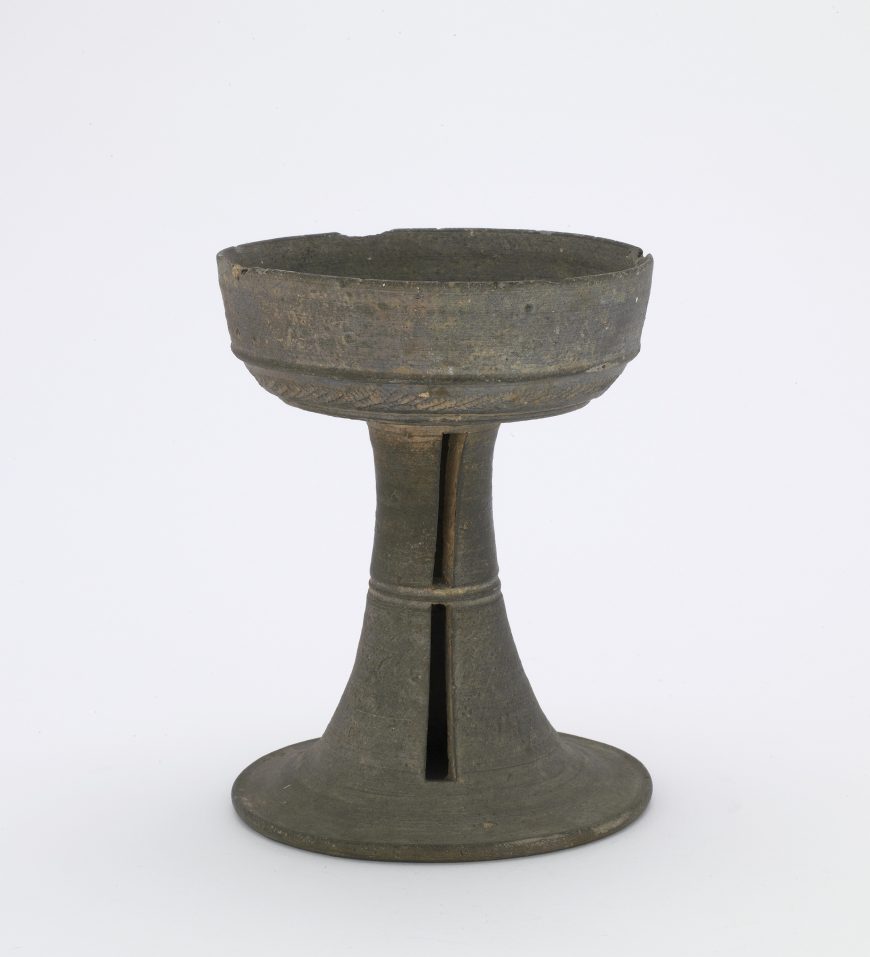
The Nintoku mausoleum in Sakai, Osaka prefecture, Japan, part of the Mozu-Furuichi group of ancient burial sites known as kofun (image: KYODO, Japan Times)
Kofun period (c. 3rd century–538 C.E.): influential importations from the Asian continent
The Kofun 古墳 period in Japan is so named after the burial mounds of the ruling class. The practice of building tomb mounds of monumental proportions and burying treasures with the deceased arrived from the Asian continent during the 3rd century. Originally unadorned, these tombs became increasingly ornate; by the 6th century, burial chambers had painted decorations. The burial mounds were encircled with stones; hollow clay earthenware, known in Japanese as haniwa 埴輪, were scattered for protection on the land surrounding the mounds. Kofun were typically keyhole-shaped, had several tiers, and were surrounded by moats. The resulting structure amounted to an impressive display of power, advertising the control of the ruling families. The largest kofun is the Nintoku mausoleum, measuring 486 meters!

Haniwa. Left to right: Cylindrical haniwa, 5th century, excavated in Kaga-shi, Ishikawa, earthenware (Tokyo National Museum, image: Steven Zucker); haniwa house, 5th century, excavated in Sakura-shi, Nara, earthenware (Tokyo National Museum); haniwa horse, 5th-6th century, Japan, earthenware, partially restored, H. 94 cm (Tokyo National Museum); haniwa of a female shrine attendant, 6th-7th century, Japan, earthenware, 88.9 cm high (Yale University Art Gallery)
The hollow clay objects, haniwa, that were scattered around burial mounds in the Kofun period, have a fascinating history in their own right. Initially simple cylinders, haniwa became representational over the centuries, first modeled as houses and animals and ultimately as human figures, typically warriors. The later pieces have been of great help to anthropologists and historians as tokens of the material culture of the Kofun period, offering a glimpse into that society. Whether offerings for the dead or protective barriers meant to guard the tombs, haniwa have a strong aesthetic identity that continues to be a source of inspiration for Japanese ceramists.

Shallow cup on tall pedestal foot, Kofun period, 6th century, Japan, Sue ware, unglazed stoneware, H. 15.1 cm (Gift of Charles Lang Freer, F1907.525, Freer Gallery of Art)
Through gradual consolidation of political power, the Kofun-period Yamato clan became a kingdom with seemingly remarkable control over the population. In the 5th century, its center moved to the historical Kawachi and Izumi provinces (on the territory of present-day Osaka prefecture). It is there that the largest of the kofun burial mounds testify to a thriving Yamato society, one that was increasingly more secular and military.
Simultaneously, the potter’s wheel was used for the first time in Japan, likely transmitted from Korea, where it had been adopted from China. This new technology was used to produce what is known as Sue ware—typically bluish-gray or charcoal-white footed jars and pitchers that had been fired in sloped-tunnel, single-chamber kilns (anagama 穴窯) at temperatures exceeding 1,000 degrees celsius. Like other types of ancient Japanese pottery, Sue ware continues to be a source of inspiration for ceramists, in Japan and beyond.

